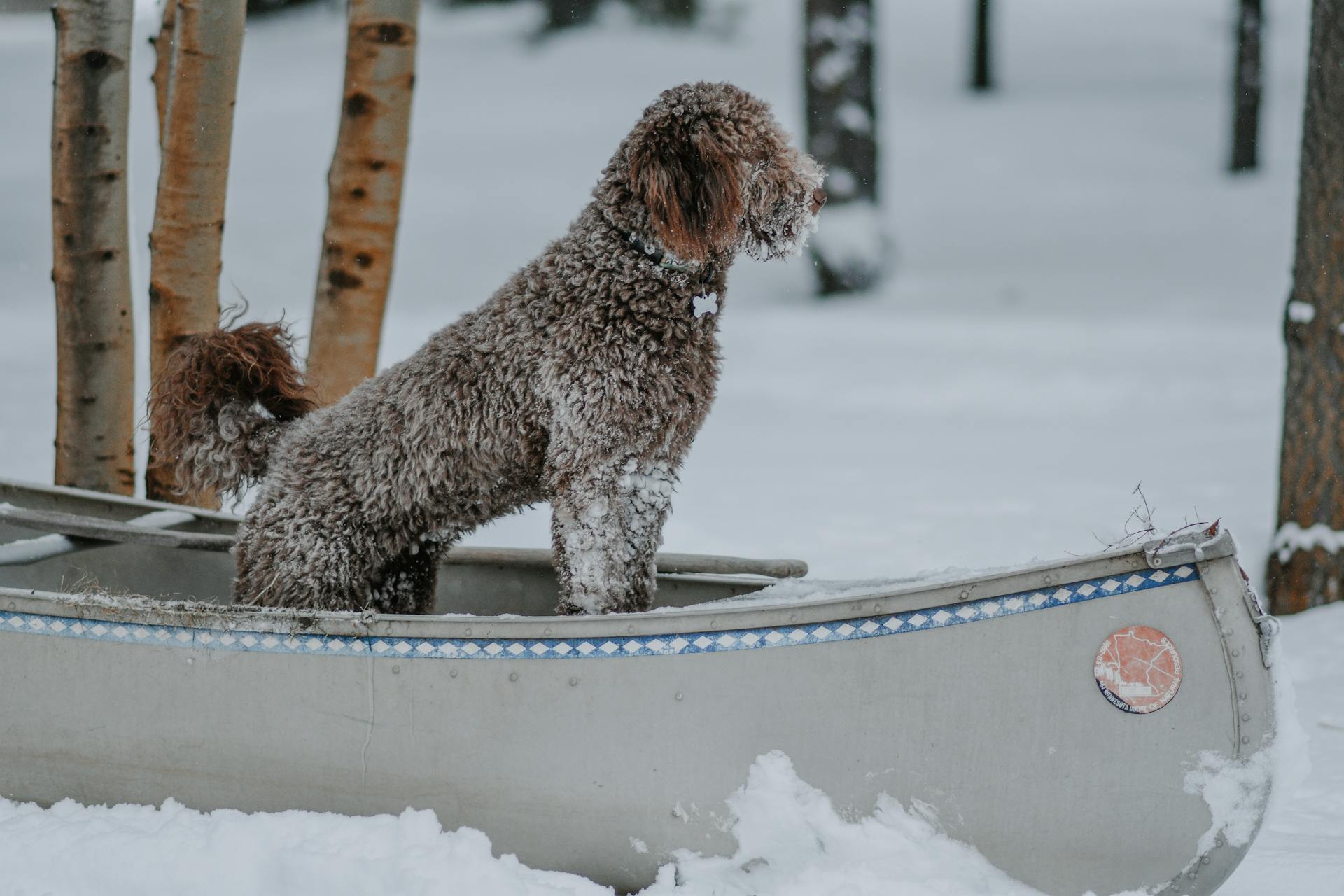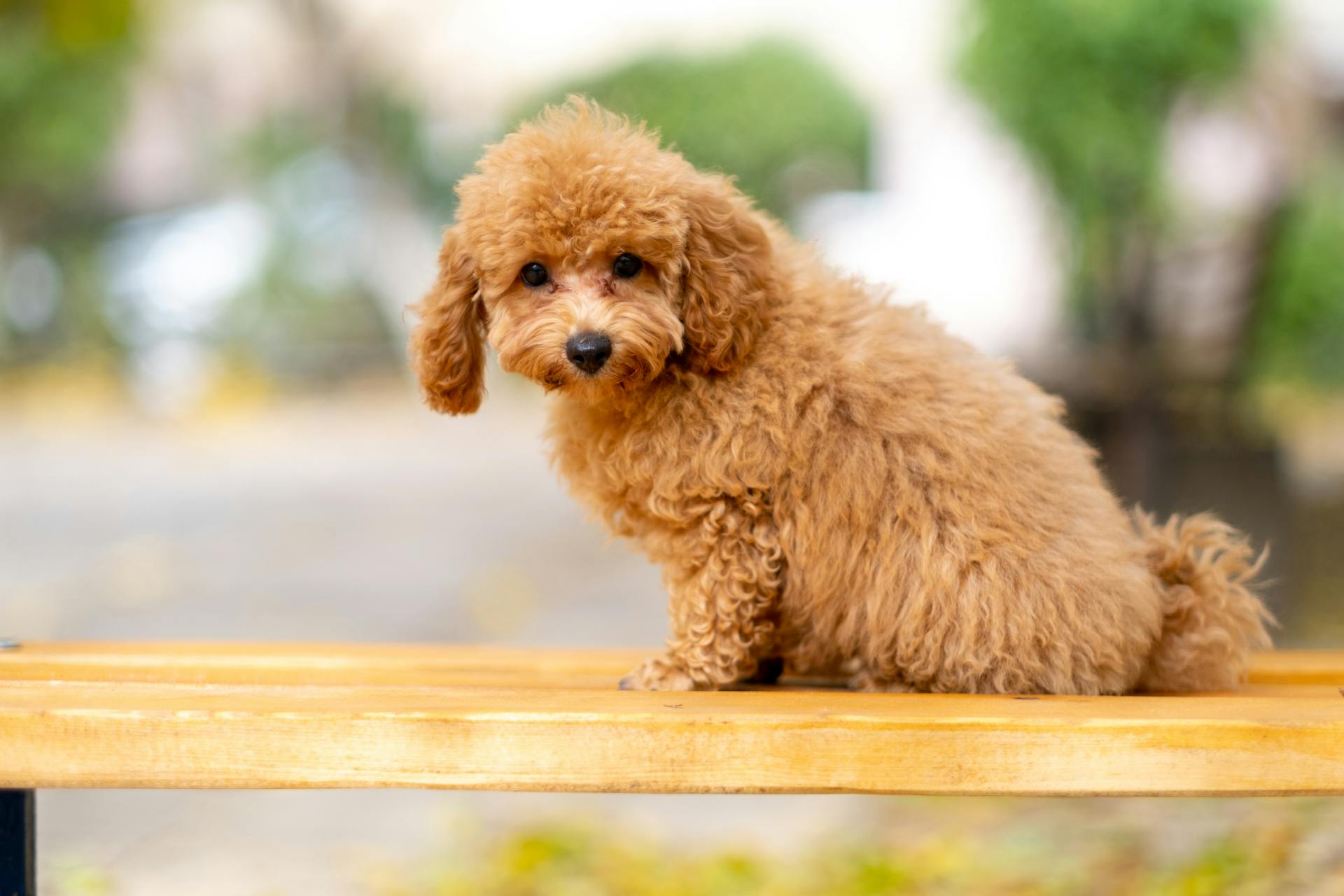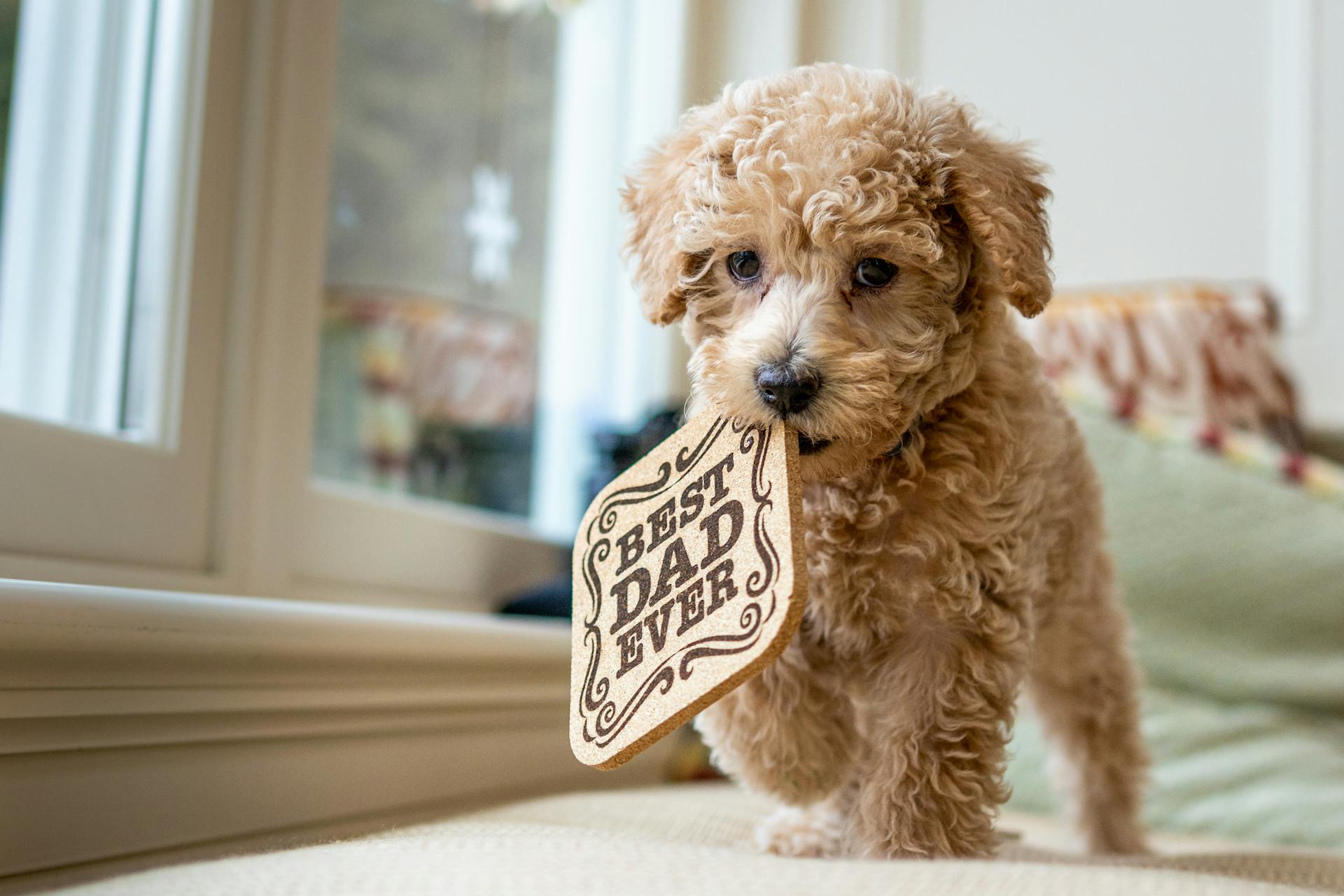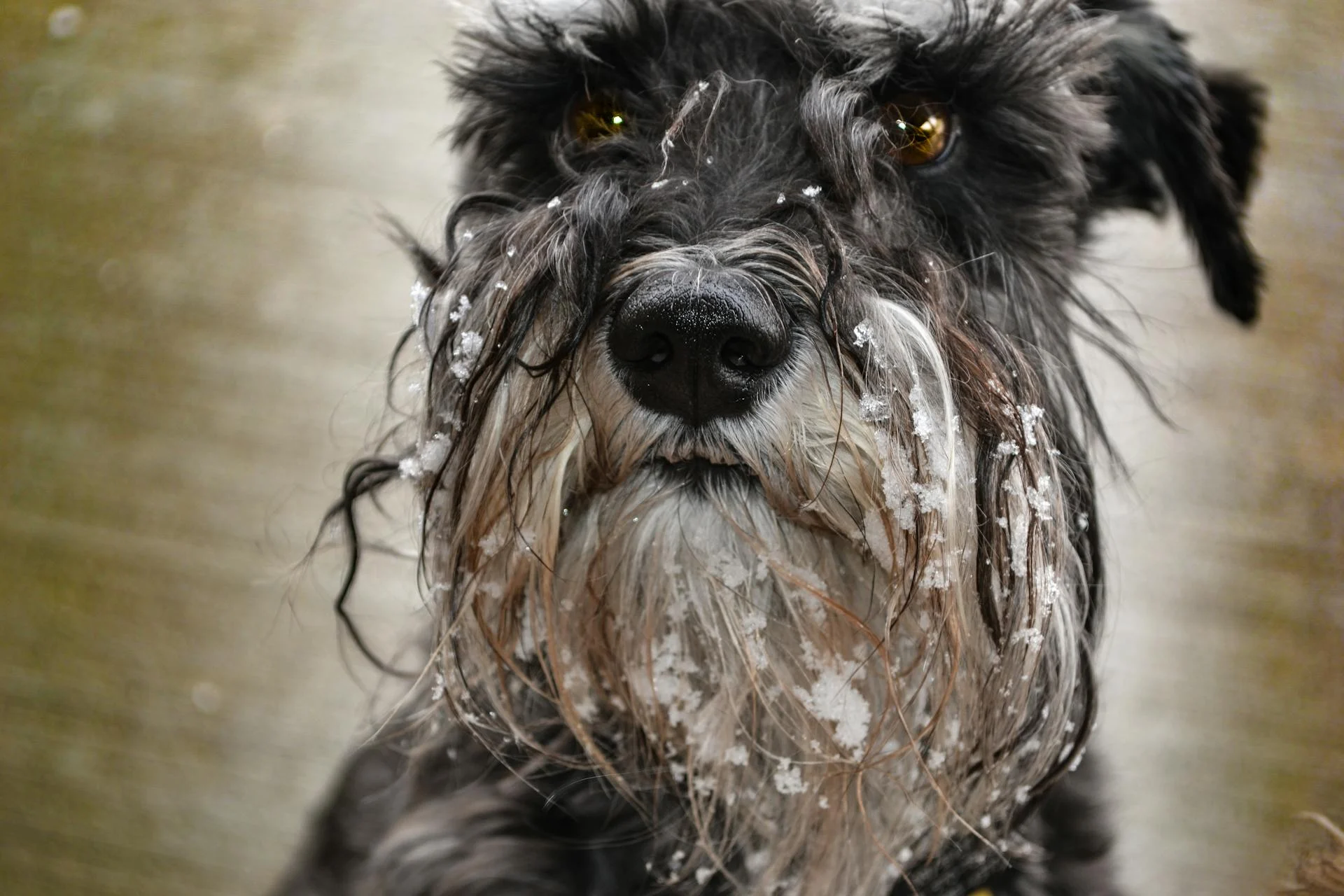
The Standard Schnoodle is a cross between a Standard Poodle and a Standard Schnauzer, weighing between 40-65 pounds and standing 18-22 inches tall. This size makes them a great companion for active families.
Their low-shedding coat requires regular grooming to prevent matting and tangling, which can be done every 6-8 weeks. This is a crucial aspect of their care.
Standard Schnoodles are highly intelligent and trainable, making them a great choice for first-time dog owners. They thrive on mental and physical stimulation, so be prepared to spend time with them.
Their lifespan is around 12-15 years, making them a long-term companion.
Caring for a Standard Schnoodle
A Standard Schnoodle is a wonderful companion, but they do require regular grooming. They need to be brushed at home a few times a week, and some even daily, to prevent matting and tangling.
Their coats are usually wavy or curly, but can also be straight. They come in a variety of colors, including white, brown, red, cream, black, and gray.
Schnoodles need frequent grooming, especially if they spend a lot of time outdoors. They'll need their nails trimmed regularly, and their ears checked often for signs of infection.
With a good bathing routine and regular grooming, a Standard Schnoodle's coat will stay healthy and look its best. Some owners prefer to trim and brush their dog's coat at home, while others leave it to the professionals.
A unique perspective: Standard Poodle Groom
Health Issues
A Standard Schnoodle's average lifespan is between 12 to 16 years, but this can vary depending on their size.
Their hybrid nature means they can inherit health issues from both Poodles and Schnauzers, making it essential to work with a reputable breeder who prioritizes health testing.
Some common health problems in Schnoodles include hip and elbow dysplasia, patellar luxation, Addison's disease, and progressive retinal atrophy.
These health issues can be managed with proper care, exercise, and a balanced diet, but it's crucial to be aware of the potential risks.
You might enjoy: Standard Poodle Health Problems
Here are some specific health concerns to watch out for in a Standard Schnoodle:
A responsible breeder will have health certificates from organizations like the Orthopedic Foundation for Animals (OFA) and Canine Eye Registry Foundation (CERF) to ensure the parent dogs are healthy.
By being aware of these potential health issues and working with a reputable breeder, you can increase the chances of getting a healthy Standard Schnoodle.
For your interest: Standard Schnauzer Health Problems
What to Feed
When it comes to feeding your Standard Schnoodle, you'll want to choose a high-quality dog food that meets their nutritional needs.
Feed your Schnoodle a well-balanced diet of dog food approved by the Association of American Feed Control Officials (AAFCO).
The recommended amount of daily food for a Schnoodle is between 3/4 to 1 cup of high-quality dog food.
You can choose from dry and canned dog food, but make sure to talk to your veterinarian first to get their recommendation.
Your veterinarian can also help you determine the best feeding schedule for your Schnoodle, whether it's two meals a day for adults or three or four meals daily for puppies.
The feeding guide on your dog food bag will give you recommended portions based on your pet's ideal weight, but your veterinarian's advice is always the best.
See what others are reading: Standard Poodle Feeding Chart
Personality and Behavior
Standard Schnoodles are naturally energetic dogs that require daily walks and playtime to prevent destructive behaviors. They thrive on physical and mental stimulation.
They're also highly intelligent and easy to train, thanks to their Poodle and Schnauzer heritage. With early socialization and training, they can grow into well-behaved and loyal companions.
Standard Schnoodles are generally great with children and other pets, thanks to their gentle nature. However, they can be wary of strangers and may need time to warm up to new people.
Suggestion: Schnoodle Pictures
Fun Activities
Schnoodles are social animals that thrive in the company of others. They love being around their pet parents, children, and other household pets.

If you're looking for ways to engage your Schnoodle, consider their love of playtime. They'll romp around the backyard or through the house with kids, but always supervise interactions between kids and Schnoodles.
For a fun and active lifestyle, try incorporating some of these activities into your daily routine. Tug-of-war, fetch, and agility training are all great ways to get your Schnoodle moving and exercising their mind.
Schnoodles also enjoy learning new tricks and participating in obedience training. These activities will challenge their problem-solving skills and strengthen your bond with them.
Some other fun activities for Schnoodles include swimming and dock diving. These water-based activities will provide them with a new way to play and exercise.
Here are some fun activities for Schnoodles:
- Tug-of-war
- Fetch
- Agility
- Nose work
- Learning new tricks
- Obedience training
- Swimming
- Dock diving
Personality and Behavior
Schnoodles need to be kept active through daily walks and playtime to prevent destructive behaviors.
They thrive in environments with plenty of social interaction, whether that's with their owners, children, or other pets. With proper training and socialization, they get along well with kids and other pets.
Schnoodles are naturally playful and fun-loving, enjoying being part of their owner's everyday activities. They're also extremely loyal, loving, and affectionate.
Their high intelligence levels and eagerness to please make them easy to train, but they require plenty of mental and physical stimulation to prevent behavioral problems. This means they need early socialization and training to grow into well-behaved and well-rounded adults.
Schnoodles can inherit stubbornness from their Schnauzer parent, which is more prevalent in larger pups like the Giant Schnoodle. They can also be wary of strangers and bark excessively if not trained and socialized properly.
They need to be introduced to training and socialization as soon as you bring them home to ensure they grow into well-behaved and well-rounded adults. This helps them become loyal, intelligent, and happy companions.
Schnoodles can take a minute to warm up to people, but once they realize you're not a threat, they'll become your best friend. They're known for being standoffish at first, but with proper socialization, they'll become affectionate and enthusiastic.
In households with older children and adults, Schnoodles thrive, but they may need training and patience before interacting with younger children. With proper training and socialization, they make excellent family dogs and companions.
On a similar theme: How to Train a Standard Poodle
Training
Schnoodles are smart and highly trainable dogs, so they can learn basic training cues quickly and even more complex tricks with positive reinforcement.
Poodles and Schnauzers are both intelligent breeds, and their mix, the Schnoodle, inherits this smarts, making them easy to train. They are eager to please and enthusiastic about training lessons.
To train your Schnoodle, you should use positive reinforcement, which means rewarding good behavior with treats, praise, and affection. This approach will help your dog learn quickly and stay motivated.
Schnoodles need to be socialized as puppies to become polite pups as adults. Exposing them to new people, animals, sounds, and situations will help them develop good manners.
As an active and energetic breed, Schnoodles require at least 30 to 60 minutes of exercise daily. You should also set aside time for playing fetch and other fun activities to keep them happy and healthy.
With proper training and socialization, you can avoid behavioral problems like becoming destructive. It's essential to provide your Schnoodle with mental and physical stimulation to prevent these issues.
If you're new to dog training, consider enrolling your Schnoodle in a comprehensive training program like the Online Puppy School by Baxter & Bella. This program provides lifetime access and all the resources you need to raise a well-rounded adult Schnoodle.
Appearance
A standard schnoodle typically stands 26 inches tall and weighs around 60–70 pounds. Their size can vary, but it's essential to meet the parents of your schnoodle before adopting to understand their specific lineage.
Miniature schnoodles are the most popular, weighing between 10–20 pounds. This size variation is due to genetic influences from the parents, grandparents, and great-grandparents.
There is no one-size-fits-all approach to schnoodle size, and even two dogs of similar size can produce offspring with varying weights. This is why it's crucial to research and purchase responsibly.
Here's a rough estimate of standard schnoodle sizes:
Their low-allergen coats are a significant advantage, as they shed infrequently and have less dander. However, this comes with the trade-off of requiring regular combing and trimming to prevent matting and tangling.
Breed Information
The Standard Schnoodle is a cross between a Standard Poodle and a Standard Schnauzer, and they can weigh between 35 to 60 pounds and stand 15 to 19 ½ inches in height.
They come in a variety of sizes, which is one of the perks of getting a hybrid. You can expect a lot of possibilities when it comes to their size and appearance.
Schnoodles make excellent pets and emotional support animals for any household and person. They are smart, affectionate, and they live to please their owners.
Here are the available size variations for Schnoodles:
What Is a Standard Schnoodle
A Standard Schnoodle is a result of breeding between a Standard Poodle and a Schnauzer, or sometimes a Giant Schnauzer and a Standard Poodle.
They come in a variety of sizes, including a small Schnoodle, but breeders are experimenting with breeding larger sizes.
The Standard Schnoodle is a relatively new breed, not recognized by the AKC, which means there are no breed clubs or official breed standards for it.
The aim of creating Schnoodles was to get a dog that does not shed a lot, is suitable for people with allergies, and could be a great companion for the entire family.
The history of crossing different types and breeds of dogs is not new, and people have been doing it for centuries to achieve a certain look, temperament, and ability in a dog.
This makes them one of the most hypoallergenic dog breeds, which is great news for people with allergies who want a furry companion.
Size Variations and Breed Standards
Schnoodles come in a variety of sizes, depending on the size of their parents. This means you can expect a range of possibilities when it comes to their size and appearance.
Both the parent breeds, Schnauzer and Poodle, come in different size variations, which contributes to the size variation in Schnoodles. The Poodle comes in Toy, Miniature, and Standard size, while the Schnauzer comes in Miniature, Standard, and Giant size.
Schnoodles can be bred to be small, but they're also found in other sizes. The available size variations include Toy, Miniature, Standard, and Giant Schnoodles.
Curious to learn more? Check out: Full Grown Giant Schnoodle
Here are the expected height and weight ranges for each size variation:
Schnoodles typically reach their full adult size between 6 months and 2 years old, depending on their size.
General Information
A standard schnoodle is a wonderful companion, and here's what you need to know about them. They can weigh anywhere from 15 to 65 pounds.
Their lifespan is relatively long, ranging from 12 to 15 years. This is a great advantage for anyone looking for a loyal friend that will be by their side for a good chunk of their life.
Their temperament is generally friendly, gentle, and anxious at times. This mix of traits makes them a great fit for families and households with multiple pets, including cats and other dogs.
Overview
The Schnoodle is a cross between a Poodle and a Schnauzer, and it's a hybrid breed that comes in a wide range of sizes. Its official name is simply Schnoodle.
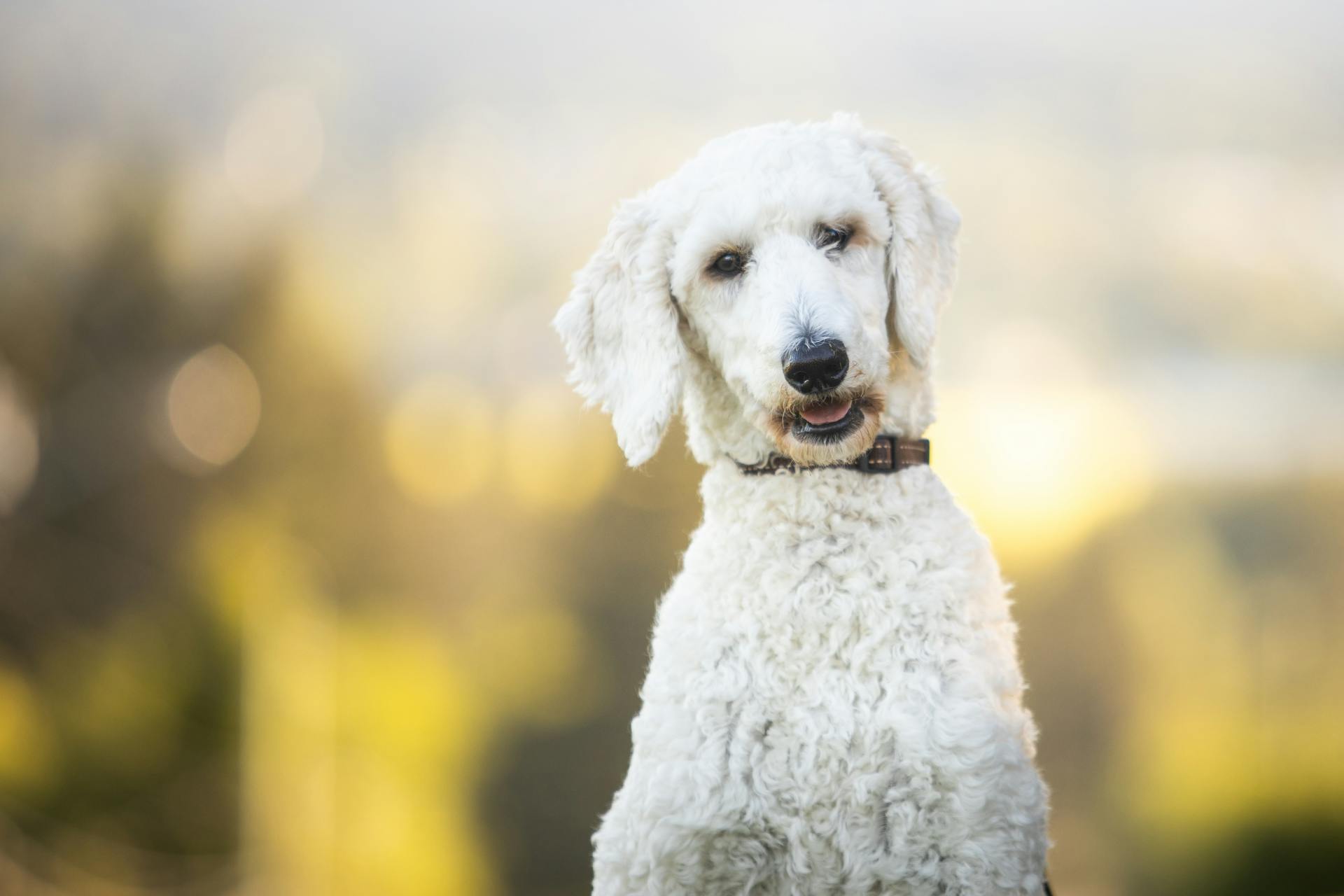
Schnoodles can grow up to 26 inches in height, which is quite tall for a pet. They can weigh anywhere from 5 to 70 pounds, so they can be quite small or quite large.
Schnoodles are known for being friendly and gentle, making them a great addition to families with children. They're also good with cats and other dogs.
In terms of grooming, Schnoodles have a curly or medium-length coat that requires regular attention to prevent matting and tangling. They shed very little, which makes them a good choice for people with allergies.
Schnoodles are highly intelligent, which means they're relatively easy to train. However, they can be anxious at times, so it's essential to provide them with plenty of exercise and mental stimulation.
Here's a quick rundown of Schnoodle sizes, based on the size of their Poodle and Schnauzer parents:
Overall, Schnoodles are a versatile breed that can thrive in a variety of living situations, from apartments to homes with yards.
Living Needs
Living in a small apartment is no problem for smaller schnoodles, as they're happy to lounge around and be lap dogs. They're perfect for city living.
Larger schnoodles, on the other hand, need a fenced backyard to run around and play. This is crucial for their exercise and happiness.
Schnoodles are known for their calm demeanor, which means they can be left at home for short periods of time without developing anxiety. They're not high-maintenance in this regard.
However, regular exercise is still essential for schnoodles to prevent weight gain and related health problems. This is true even for the calmest of schnoodles.
A daily walk or access to a dog park is a great way to keep your schnoodle happy and healthy. If you don't have a backyard, this is a must.
Some schnoodles enjoy swimming or playing fetch, but it's essential to remember that they're not as energetic as some other breeds. They'll need to be in the mood for these activities.
Hypoallergenic and Price
Schnoodles are known for their low-shedding and allergy-friendly coats, making them a great choice for those with sensitivities.
Their coats can vary from wavy to curly, but curly coat Schnoodles tend to have less curl than their Poodle parent.
On average, a Schnoodle costs anywhere between $2,000 to $3,000, with some rescue groups offering them for $500.
Coat and Hypoallergenic Level
Schnoodles are known for their low-shedding and allergy-friendly coats. They typically have a soft, wavy to curly texture, although some may inherit a wiry coat from their Schnauzer parent.
While Schnoodles are often considered hypoallergenic, it's essential to remember that no dog is 100% hypoallergenic. They may still shed very little, just like their Schnauzer parent.
Schnoodles with curly coats tend to have less curl than their Poodle parent, while those with wavy and wiry coats may exhibit less wiriness. This means their grooming needs can vary depending on their coat type.
You might enjoy: Standard Poodle Hypoallergenic
Here's a rough guide to Schnoodle coat types:
Regardless of coat type, regular grooming is a must for Schnoodles. Brushing them a few times a week, or daily if possible, can help prevent matting and keep their coat looking its best.
Check this out: Flat Coat Doodle
Average Price of a Standard Schnoodle
The average price of a Standard Schnoodle can vary depending on where you get it from. On average, these dogs cost anywhere between $2,000 to $3,000.
If you're considering adopting a Standard Schnoodle from a rescue group, you can expect to pay around $500.
These designer breeds are high-maintenance, which can lead to higher costs over their lifetime. You can expect to pay anywhere between $15,000 to $20,000.
Frequently Asked Questions
What is the lifespan of a Schnoodle?
A Schnoodle's lifespan typically ranges from 10 to 18 years, depending on its size.
What is the rarest color for a Schnoodle?
The rarest color for a Schnoodle is Merle, which may incur additional fees. This unique color is highly sought after by many Schnoodle enthusiasts.
Featured Images: pexels.com
